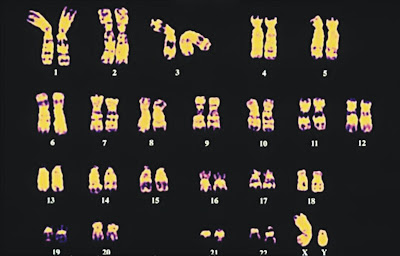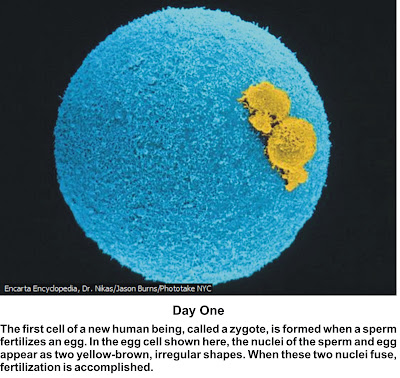Chromosomes are rod-shaped structure, usually found in pairs in a cell nucleus. Chromosome carries the genes that determine sex (either male or female) and the characteristics (physical appearance, behavior, racial/tribal traits etc.) which an organism inherits from its parents.
In human beings, the body cells usually have a diploid number of 46 chromosomes which are arranged in 23 pairs. These chromosomes are paired according to their sizes viz: the largest of the pair is chromosome 1 while the smallest is termed chromosome 23. Each pair of chromosomes is referred to as diploid (i.e. two chromosomes acting as one in pairs) while one chromosome in each pair is called a haploid.
In the cells of most organisms that reproduce sexually, the chromosomes exist in pairs. Hence, in human beings, gamete cells are produced for sexual reproduction. These gametes in human beings contain a haploid number of chromosomes—23 chromosomes instead of the full complement of 46. The gamete cells in female human beings mature into eggs, with each egg containing chromosomes 1 through 22 and one X chromosome; while the male human beings produce gametes that mature into sperm, and each sperm cell consists of a single set of chromosomes 1 through 22 and either one X or one Y chromosome.
During the process of fertilization in human beings, one egg fuse with a sperm containing a Y chromosome to develop into a male offspring while one egg fertilized by a sperm cell containing one X chromosome transforms into a female offspring.
One chromosome is inherited from the female parent (always X-chromosomes, since the cells of the ovum of a female human being has two X chromosomes), and one is inherited from the male parent (i.e. either X-chromosome or Y-chromosome, since the sperm cells of a male human being contains two chromosomes in form of X and Y chromosomes (XY)). These two chromosomes of each pair (individually referred to as a haploid gamete) contain genes that correspond to the same inherited characteristics. Each pair of chromosomes is unique and extremely different from every other pair of chromosomes within the same cell.
Note that one chromosome from one male diploid will fuse with one chromosome from one female diploid to form what is known as a zygote. In the zygote formed, each of the two fused chromosomes is referred to as a haploid.
Every living species has its own number of chromosome pairs and this varies with different organism. The number of chromosomes characteristic of an organism is referred to as the diploid number. For example, the tomato plants have have 12 pairs of chromosomes and a diploid number of 24 while dogs have 39 pairs of chromosomes and a diploid number of 78.
Sex cells (eggs or sperm) contain only half the number of chromosomes found in the other cells of an organism. This reduced number of chromosomes in the sex cells is known as the haploid number. During fertilization, an egg and sperm unite to form a cell known as a zygote, the first cell of the offspring (i.e. the baby). The zygote contains the diploid number of chromosomes characteristic of the species.
It should be noted that some organisms do not have complete sets of matching chromosomal pairs. (a complete sets of matching chromosomal pairs is known as autosomes). In mammals, birds, and some other organisms, one pair of chromosomes is not identical.
This un-identical pair of chromosomes is known as the sex chromosomes and it plays a dominant role in determining the sex of an organism. Female human beings have two copies of the X chromosome while males have one Y chromosome and one X chromosome. Both males and females inherit one sex chromosome from the mother (always an X chromosome) and one sex chromosome from the father (an X in female offspring and a Y in male offspring). The presence of the Y chromosome determines that a zygote will develop into a male.
During sexual reproduction, a zygote cell is formed by the fusion of the male and female sex cells, or gametes, after which the fused cell begins to divide and become an embryo. A zygote is a diploid cell (that contains a full set of chromosomes) resulting from the fusion of two haploid gametes (i.e. half of them from each of the gametes – one from male gamete and the other from the female gamete).
In simpler word, a zygote is a fertilized ovum.
References:



No comments:
Post a Comment
Note: Only a member of this blog may post a comment.